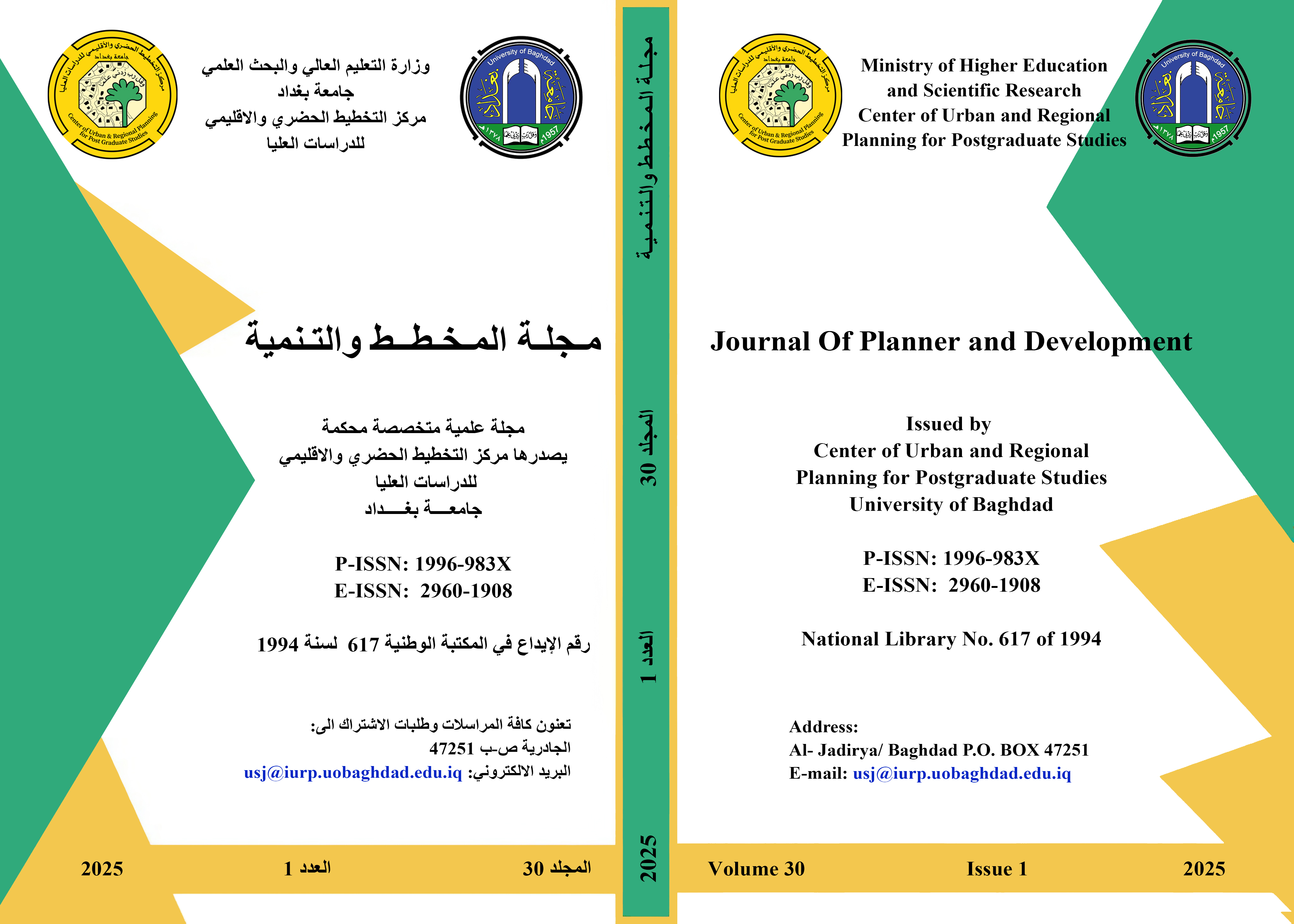Abstract
The quality of human settlements varies depending on the regions, and they differ in their spatial characteristics in terms of their area, development potential, and natural resources, as well as the number of people living in them, as these characteristics differ from one place to another, from one region to another, and between urban and rural areas. There is a big difference between the level of capabilities, job opportunities, social services and infrastructure that qualifies it to create a stable and suitable place for living. It seeks to achieve spatial equality among its residents and provide job opportunities for them on the basis of the development resources and capabilities available in that region without depleting its capabilities and resources and in a way that achieves sustainability across generations through... Raise the economic and social level of its population.
The establishment of administrative units must be in the light of measuring the spatial characteristics and indicators that fall on the planning tasks with the aim of reducing the gaps between the district and the district and studying the available resources that make a newly established administrative unit that raises the desired economic and social levels and meets the needs of the population within the spatial space, making it an administrative unit. Independent and capable of managing its tasks and resources optimally in proportion to the location and size of the population.
The establishment of administrative units must be in the light of measuring the spatial characteristics and indicators that fall on the planning tasks with the aim of reducing the gaps between the district and the district and studying the available resources that make a newly established administrative unit that raises the desired economic and social levels and meets the needs of the population within the spatial space, making it an administrative unit. Independent and capable of managing its tasks and resources optimally in proportion to the location and size of the population.
Keywords
Region
regional planning.
spatial development
spatial dimension
the stables
Abstract
تختلف نوعية المستقرات البشرية بما فيها الاقضية والنواحي وتتفاوت في خصائصها المكانية من حيث مساحتها وامكاناتها التنموية ومواردها الطبيعية فضلا عن عدد السكان التي يعيشون فيها ،حيث تتفاوت هذه الخصائص من مكان لآخر ومن إقليم لآخر وما بين الحضر والريف وتبعا لذلك تتغير الامكانات ضمن الاقضية والنواحي وتتباعد بشكل كبير ما بين مستوى الامكانات وفرص العمل والخدمات الاجتماعية والبنى التحتية التي تؤهِّلها لخلق مستقرة ملائمة للعيش وتسعى الى تحقيق المساواة المكانية بين افراد سكانها وتوفير فرص العمل لهم بالاعتماد على الموارد والامكانات التنموية المتوفرة في تلك الناحية او ذلك القضاء فيها دون استنزاف امكاناته وموارده وبالأسلوب الذي يحقق الاستدامة فيها عبر الاجيال عن طريق رفع المستويات الاقتصادية والاجتماعية لسكانها، وان استحداث الوحدات الادارية لابد ان يكون في ضوء قياس الخصائص والمؤشرات المكانية التي تقع على عاتق مهام التخطيط من اجل تقليل الفجوات ما بين القضاء والناحية ودراسة الموارد المتاحة والتي تجعل من الوحدة الادارية المستحدثة ترتقي بالمستويات الاقتصادية والاجتماعية المرجوة وتحقق احتياجات السكان ضمن الحيز المكاني بالشكل الذي يجعلها وحدة ادارية مستقلة وقادرة على ادارة مهامها ومواردها بالشكل الافضل الذي يتناسب مع المكان وحجم السكان
Keywords
المكان ، التنمية المكانية ، البعد المكاني ، المستقرات ، التخطيط الاقليمي
